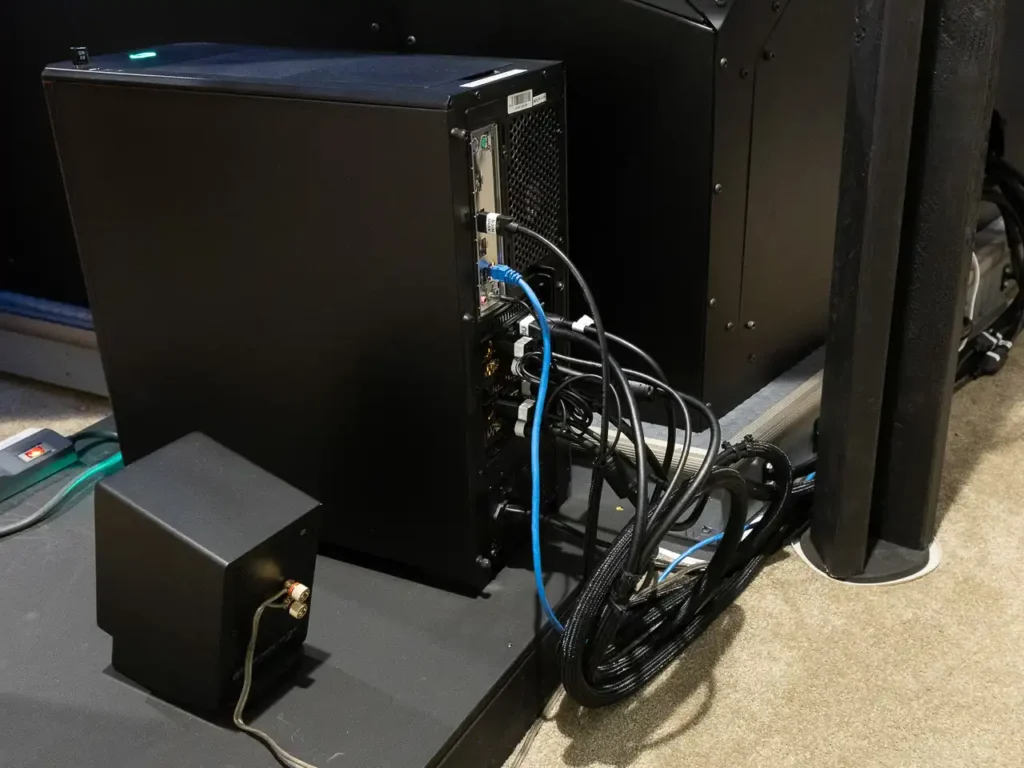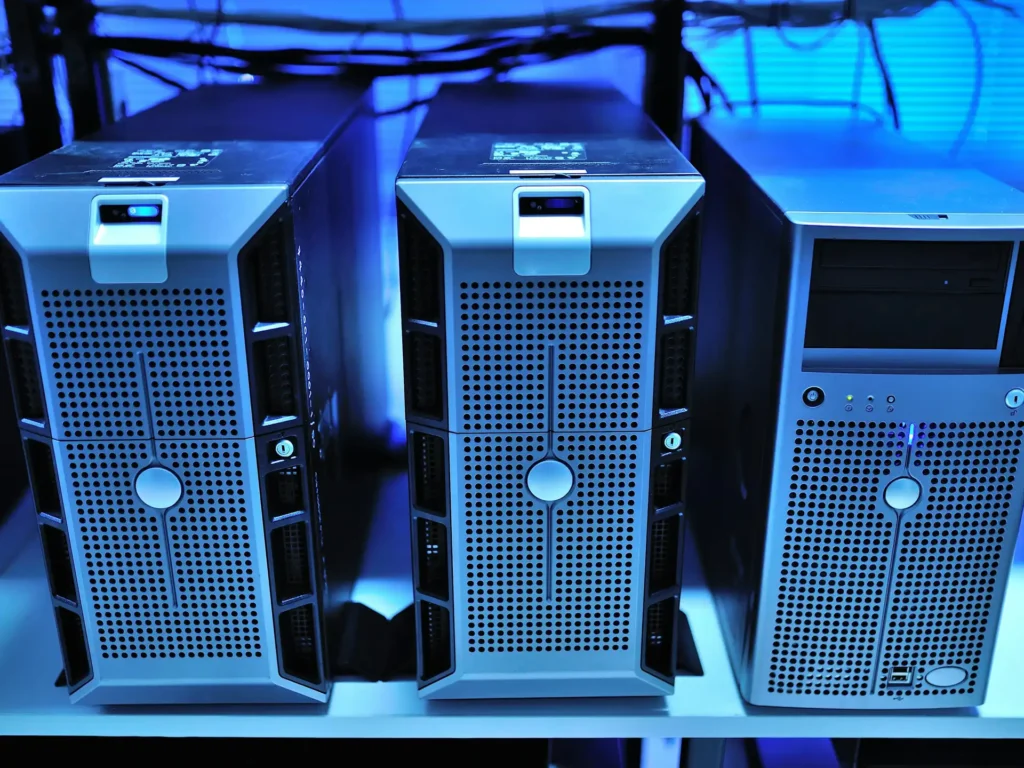A secondary computer is primarily responsible for running a suite of aircraft simulator applications that emulate the various aircraft systems and create graphics for the flight deck displays. This computer also is used for interfacing with most of the flight deck hardware that use USB for connectivity
Medium Performance but Two Video Cards
The processing load on this computer is a fraction of the performance required for the main sim computer, therefore a computer with modest specifications is usually adequate. However, dual graphics cards, along with motherboard PCI slots, are necessary for connection to the six flight deck displays, as well as a small LCD utility display.
Most gaming computers do not have dual graphic cards, and even sometimes the motherboard does not have PCI slot space for a second graphics card. Therefore, this computer usually needs to be customized so it has adequate connectivity for outputting visual data to seven LCD displays.
Recommended Specs
This simulator has a custom build gaming computer with the following specifications:
Connections
The secondary computer is connected to six physical LCD light deck displays and a small LCD utility display. They are connected via the HDMI, Display Port, and DVI outputs from the two NVIDIA graphic cards. One physical LCD display drives both the captain’s PFD & ND display. A second physical LCD display drives the first officers PFD & ND display. A third physical LCD display drives the upper engine instrument display & the standby flight instruments. The remaining displays are the captain’s CDU, the first officer’s CDU, and the lower engine instruments.
One USB port is used for connection to a 90 watt powered 16-port USB hub, which is connected to most of the flight deck hardware, such as the main instrument panel, captain’s CDU, first officer’s CDU, main overhead panel, aft overhead panel, and various pedestal panels. The analog audio output is connected to a powered speaker system for internal flight deck sounds. The computer is connected to the dedicated Ethernet router with an Ethernet cable.
The powered USB hub should always be powered on prior to starting the computer. USB devices should be initially added to the USB hub, once device at a time.

Configuration
Microsoft Windows 11 is used for the operating system. Prior to installing simulator software, the computer was configured as follows: removal of desktop shortcuts and unwanted taskbar items, configure power saving & sleep settings so that the display never blanks & the computer never sleeps, unlink Microsoft OneDrive and prevent launch at start-up, set the computer’s network name to “Avionics”, and set a fixed manual IP address for this computer that is different from the one used for the main “FltSim” computer.
Display setting are configured by identifying each display and dragging the display icons to match the physical display’s layout in the flightdeck, one row at a time, with the utility monitor at the far left position and configured to be the primary display. All displays are placed in a single virtual row in Windows display settings, aligned along the top edge. From left to right: primary utility display, captain PFD/ND, standby flight instruments & upper engine display, first officer PFD/ND, captain CDU, lower engine display, first officer CDU. The taskbar is configured to appear only on the primary utility display. Display resolutions are left to match the native resolution of each LCD display.




What motherboard should I best use for the secondary computer?
Hi Rob. It has been four years now since I built the secondary computer, so I’m no longer familiar with current models. It is not really important, in comparison to the main computer. Most important thing is that you have to drive 6 or 7 LCDs, so this requires two graphic cards (each card can usually drive 4 LCD displays). So the motherboard should have space and slots that are needed by your graphic cards. Many of these cards are thick so take up two slots in space.